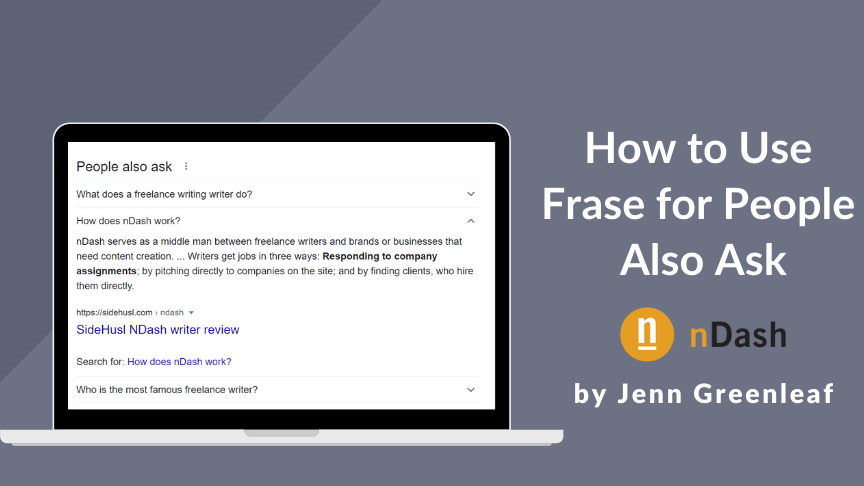There’s no guarantee where your content will show up in a search or how many people will see it – that doesn’t mean it’s impossible to get out from underneath the clutter. People want answers – and, when searching, it’s helpful if they can see what people also ask about their search terms.
When’s the last time you saw the Google search counter on Internet Live Stats? The speed of that counter shows up how many people conduct Google searches every second. Searchers want answers to solve problems, find products, retrieve data, answer questions, find locations, and the like.
Sometimes, searchers don’t receive the results they need—and that’s where the People Also Asked (PAA) box comes in handy.
What is People Also Ask?
When searching on Google, the “People Also Ask” list often immediately follows or appears soon after the first search result. This content box allows searchers to dive deeper into answers by seeing what others ask about their research topic.
Here’s an example of what you’d see if you entered “what is people also ask” into the search bar:

The “featured snippet” Google search returned also features an excellent definition of “People Also Ask” (or PAA) and a small example. However, as searchers click on questions to reveal the answer, more questions appear. There’s no limit to how many questions searchers can find.
PAA’s Importance
According to a research study conducted by Semrush in 2020, nearly half of the 1,000,000 keyword datasets they studied contained a PAA box. That information is valuable because if your site doesn’t rank during a standard search, the PAA box gives you opportunities for appearing above the fold.
Now, what do these statistics have to do with Frase?
We use this tool to help identify the best questions our audience asks. The tool is straightforward – here are the steps:
- Enter a keyword, topic, or blog title into the tool
- You’ll receive a list of questions (i.e., “People Also Asked” questions)
- Copy the questions “as is” into your document
- Reveal additional questions by clicking the down arrow under each question
We use these questions as a “FAQ” at the bottom of many of our blog posts. That’s beneficial for a couple of reasons:
- Readers receive additional information about the topic we’re covering in that post
- These questions increase organic traffic (For example, when looking at the study from Semrush again, we learn that 75% of PAA results appear in the top three results in a Google search)
Examples of PAA in Action
Here’s an example of what you’ll see if you search for “How to use People Also Ask” in Google:

When clicking the “down arrow” next to “How do you write people also asking?”, you’ll see the following changes:
.png)
You’ll see a couple of changes – the first being a short snippet answer with a link leading to where you can find additional information. The second thing you’ll notice is the list of questions expanding and changing each time you click a “down arrow.”
For example, this happens when I click on the second question: (How do you get on Google people also ask?)
.png)
About Using People Also Ask for Ranking
One thing to keep in mind about PAA boxes is that they won’t always show up above the fold — they can appear anywhere in the search results. Here are a couple of examples of how their position can change.
When searching for “how to become a certified translator,” the PAA box is in the second position:
.png)
But, when searching for the term “keyword tools,” the PAA box appears in the fourth position:
.png)
BUT – and this is interesting – if there are other questions above and beyond what could appear in the PAA box, you’ll find them directly within search results. Here’s an example of what that looks like when you search for resume templates:
.png)
Here are some tips for ranking in these boxes:
- When adding questions at the bottom of your content or on a separate FAQ page, write the question out completely and answer it concisely.
- Avoid using jargon, sales language, or technical language in answers – plain language is best.
- Consider including additional follow-up questions and answers to increase the content’s relevance.
- Consider using PAA questions in your content’s subheadings to drive reader engagement.
Include People Also Ask in Your Content Strategy
Along with keyword research, mapping your customer’s buyer journey, conducting a gap analysis, and other elements of a content strategy, determine the questions your target audience asks the most. Use tools like Ahrefs and Semrush to uncover these topics and include them in your content strategy. If you need help creating a content strategy and identifying People Also Ask (PAA) questions, contact our team today!
FAQ
How do you use people also ask?
The People Also Ask (PAA) box appears in Google’s search engine results pages (SERPs) to provide questions and answers related to the user’s original query. Every answer in this box provides a quick snippet of information and a link to the answer’s source.
What is Frase used for?
Frase is an artificial intelligence (AI) tool that helps users reduce their time researching, writing, and optimizing SEO content.
How do you get listed people also ask?
- Be sure to write out the questions and answers completely.
- Answers in plain language are best.
- Add follow-up questions and use PAA’s as subheadings.
